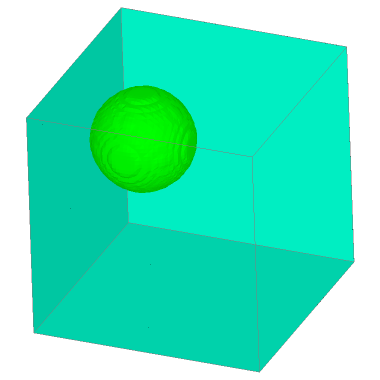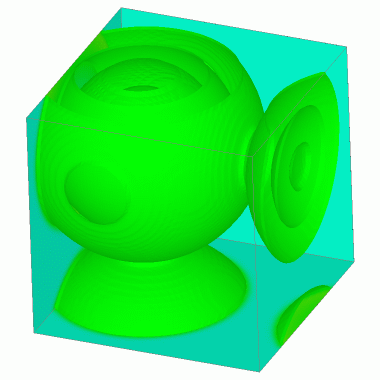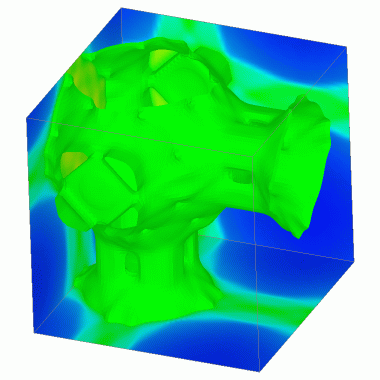Start of topic | Skip to actions
3D Euler equations - Periodic boundary conditions
3 Grid Levels (density, isosurface at 1.2)
Results: 3 Levels
 |  | |
| t=0 | t=0.21 |
 |
| t=0.84 |
Analogue to 2D computation (cuts at z=0.0 and z=0.5)
Benchmark
| Task | P=1 | P=2 | P=4, BufferWidth=2 | P=4, BufferWidth=1 | P=4, Uniform | |||||
| s | % | s | % | s | % | s | % | s | % | |
| Integration | 47865 | 91.6 | 24065 | 78.4 | 12405 | 72.8 | 7363 | 64.9 | 13212 | 97.9 |
| Flux correction | 799 | 1.5 | 1368 | 4.5 | 1116 | 6.6 | 0 | 0.0 | 0 | 0.0 |
| Boundary setting | 530 | 1.0 | 2709 | 8.8 | 1926 | 11.3 | 1720 | 15.2 | 129 | 1.0 |
| Recomposition | 2364 | 4.5 | 2091 | 6.8 | 1326 | 7.8 | 1724 | 15.2 | 0 | 0.0 |
| Clustering | 415 | 0.8 | 225 | 0.7 | 114 | 0.7 | 51 | 0.4 | 0 | 0.0 |
| Misc. | 262 | 0.5 | 222 | 0.8 | 133 | 0.8 | 480 | 4.3 | 148 | 1.2 |
| Total / Parallel Efficiency | 52235 | 100.0 | 30679 | 85.1 | 17021 | 76.7 | 11338 | 115.2 | 13489 | 96.8 |
|---|---|---|---|---|---|---|---|---|---|---|
<--- Problem description
-- RalfDeiterding - 06 Dec 2004